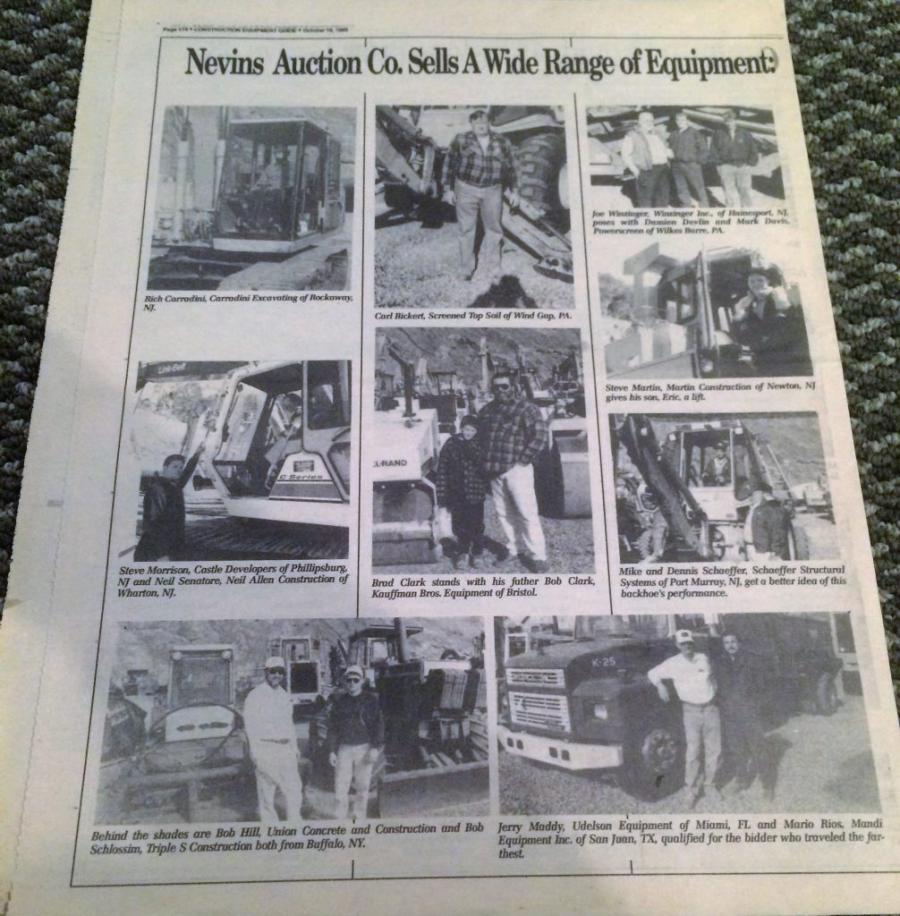Brian Fraley was doing stringer work at equipment auctions for Construction Equipment Guide when cameras used film.
Marketing is more image-driven than ever. You would think that would make for an easy transition in a visually driven industry like construction. Jobsites are full of eye candy, and yet many construction photos used for marketing purposes don't properly capture the action.
I've been on the loose with a camera in the construction industry for nearly 25 years. I was doing stringer work at equipment auctions for Construction Equipment Guide when cameras used film. See the image above of a sample from 1995.
Get a Little Closer
Ground-level overview shots of construction sites are all too common and boring. They're often taken by photographers that are afraid to get their shoes dirty or too lazy to walk the jobsite. If your project manager snapped a progress shot for the project file that's fine, but please don't use it for marketing purposes.
Get closer to the action so we can see some detail. Joe the crane operator doesn't bite. I was once tapped on the elbow by the drum of a vibratory roller while snapping a photo in a noisy North Jersey highway work zone. It's a long story, but that's what I mean by close. Your goal is to capture the subject in detail while eliminating useless background noise.
Shoot Away From the Sun
Most of us know that aiming the camera into the sun will produce a white-washed image. It can be tough getting out of direct sun on a wide open road, bridge or piece of land.
Much like the wind, the sun works best at your back when you're capturing photos on the jobsite. An overcast day can be even better. If you can't get into position with the sun behind you, find a spot in the shadows. That will keep the sunlight out of the lens while still fully illuminating the subject. Problem solved. You might also consider a filter or lens hood, assuming you're using a real camera.
Shoot Working Machinery
I love construction equipment, but photographs of idle machines aren't as exciting. It's no good for marketing communications tactics such as job stories, case studies and press releases.
Whether you're a contractor, equipment dealer, or material supplier, show the equipment working. Inaction is boring; action is dynamic. Remember, you're selling a solution, not a product?
Capture Your Team in Action
While sorting through marketing materials for a Fraley Construction Marketing client a couple years back, it occurred that the photos all featured lifeless finished equipment they had installed in buildings. I tactfully explained that the shots weren't that interesting and strongly encouraged them to capture their employees doing the work. Understand that this was a tight-knit, team-focused culture. It just never occurred to them.
Get close enough to the action that we can recognize their faces. What better way to add personality to your construction photos, and also celebrate your employees? Heavy iron is interesting and so are thousands of tons of concrete rubble crashing to the earth, but we're all wired to enjoy watching other people doing work that matters.
Choose Candid Over Staged
There are times when staged shots work, but always lean toward candid. It's understandable that you want a grip and grin with your contractor customer if you're selling a piece of equipment, conducting a tour of the shop for your local congressman, or mucking it up at an event with some colleagues.
Candid shots are generally more interesting because they show people in their natural states, whether it's a crane operator intently focused while floating an overhead load in the center of Manhattan, or a welder at the bottom of a trench. Show the work in progress.
Find Unique Perspectives
The best construction photos are taken from unique perspectives in the middle of the action. My journeys have taken me from the roof of the Capitol Building in Trenton, N.J., to the ventilation shaft above New York's Midtown Tunnel, to a manlift swaying 150 feet above JLG's McConnelsburg, Pa. headquarters.
Expansive construction sites – not to mention large cranes, drilling rigs, and pile drivers – have always been tough to photograph with a normal lens. Drones are changing that, but we don't all have the luxury of owning one. Aerial is not the only unique perspective. This is where creativity comes in. You might shoot from below or some other unique vantage point. Different is good.
Get Creative With Your Focus
Choosing a focal point isn't as easy as it sounds. Start by considering what you're trying to convey with the shot. Are you trying to show the power of a pile hammer, the smoothness of your paving, the lifting capacity of a crane, or the perfect set up of safety equipment in a highway work zone.
The angle, framing, and focus require some creativity. You might choose to zoom in on a component, building feature, or perhaps leave a certain background out of focus to draw attention to the subject. Effective composition is the underpinning of a solid construction photo.
Ready to Level Up Your Construction Photos?
The tips above, while not 100 percent comprehensive, will improve the skills of even the most inexperienced construction photographers. That could be a smart phone-wielding project manager, estimator, administrative person, or even a photographer with no construction experience.
Construction photography is a bit different than general photography. If you hire a wedding photographer to take photos on your jobsite and he asks you, “which one is the bulldozer,” the marriage is unlikely to last. And you can't just read an article, or take a photography course and expect to capture dynamic construction photos.
For more information about Fraley Construction Marketing, visit www.fraleyconstructionmarketing.com.
Today's top stories





















